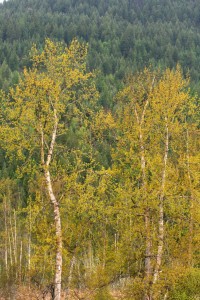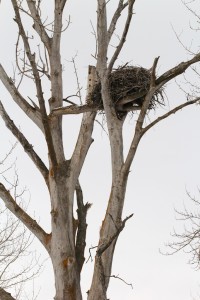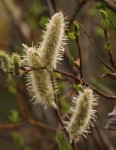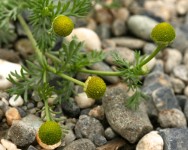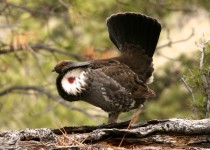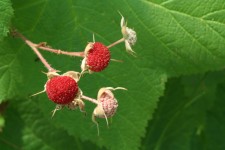One day in early spring, the sweet fragrance of cottonwood buds will fill the air. The large pointed buds of black cottonwoods are filled with a sticky, reddish substance that emits a sweet resinous fragrance.
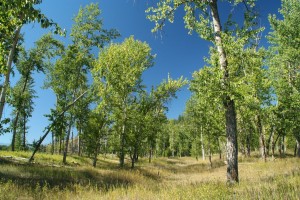
Cottonwoods grow on some of the islands in the Kootenai River and are identified by their thick, deeply-furrowed gray bark
The fragrance is only the beginning of noticeable features for black cottonwoods. The fragrance precedes the large, broad, almost triangular leaves that are deep green above and silvery white on the underside.
Most noticeable is in May or June when cottonwoods release plumes of white, cottony seeds–hence how cottonwoods received their name. The millions of seeds released will perpetuate the species if they land in a moist location and germinate.
Black cottonwood use and store a large quantity of water and, therefore, generally grow in moist areas such as riverbanks, gravel bars, lake shores, swamps and springs. Cottonwoods take in large enough quantities of water to “bleed” water when they are cut and barely float when they topple into water because they are so saturated.
Being in moist areas allows for cottonwood to grow rapidly–so rapidly that they are the fastest growing tree and largest broadleaf tree in the Inland Northwest. The rapid growth doesn’t produce durable wood, so the wood is weak. Large upper limbs are extremely susceptible to breaking off during windstorms or under a considerable amount of snow or ice.
However, broken branches and remaining stumps help perpetuate the species. New trees can sprout from cut stumps, limbs partially buried in soil or from surface roots. As a shade-intolerant pioneer species, cottonwood rely on their rapid growth to maintain the dominant position on barren soil, such as gravel bars disturbed by flood waters.
Cottonwoods are an important component of river ecosystems. A cottonwood’s root system helps stabilize river banks and islands. Their heavy crown shades the water and keeps it cool for fish.
Even trees toppled by erosion or old age are important as habitat. When cottonwoods topple into a body of water, they provide important aquatic habitat for fish. The decaying leaves also provide a source of nutrients for caddisflies, mayflies and other insects.
In addition to fish, other wildlife utilize cottonwoods in many ways. The large upper limbs of cottonwood provide sites for the huge platform stick nests of bald eagles and osprey. Colonies of blue herons also build large stick nests in the crowns of cottonwoods.
Rotten trunks or places where limbs have broken off offer cavities for woodpeckers, great horned owls, wood ducks, flying squirrels, raccoons and numerous songbirds.
Beavers easily gnaw through the weak wood to topple trees for food and for building lodges and dams.
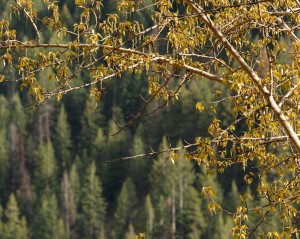
Male and female flowers are produced on separate trees and the female catkins (flowers) give rise to the plumes of cottony seeds
Deer, moose and elk eat the twigs and buds and they can hinder the growth of cottonwoods even more by rubbing their antlers on young saplings.
If a cottonwood can survive the elk, deer, voles, mice and beavers for 10 years, then the cottonwood will be old enough to begin to flower.
Most cottonwoods don’t live past 200 years old but in those 190 years of flowering, they produce billions of cottony seeds that drift through the air and pile up like snow drifts in the summer. Maybe only a few hundred of those seeds will germinate and survive long enough to emit the sweet fragrance that announces spring.

